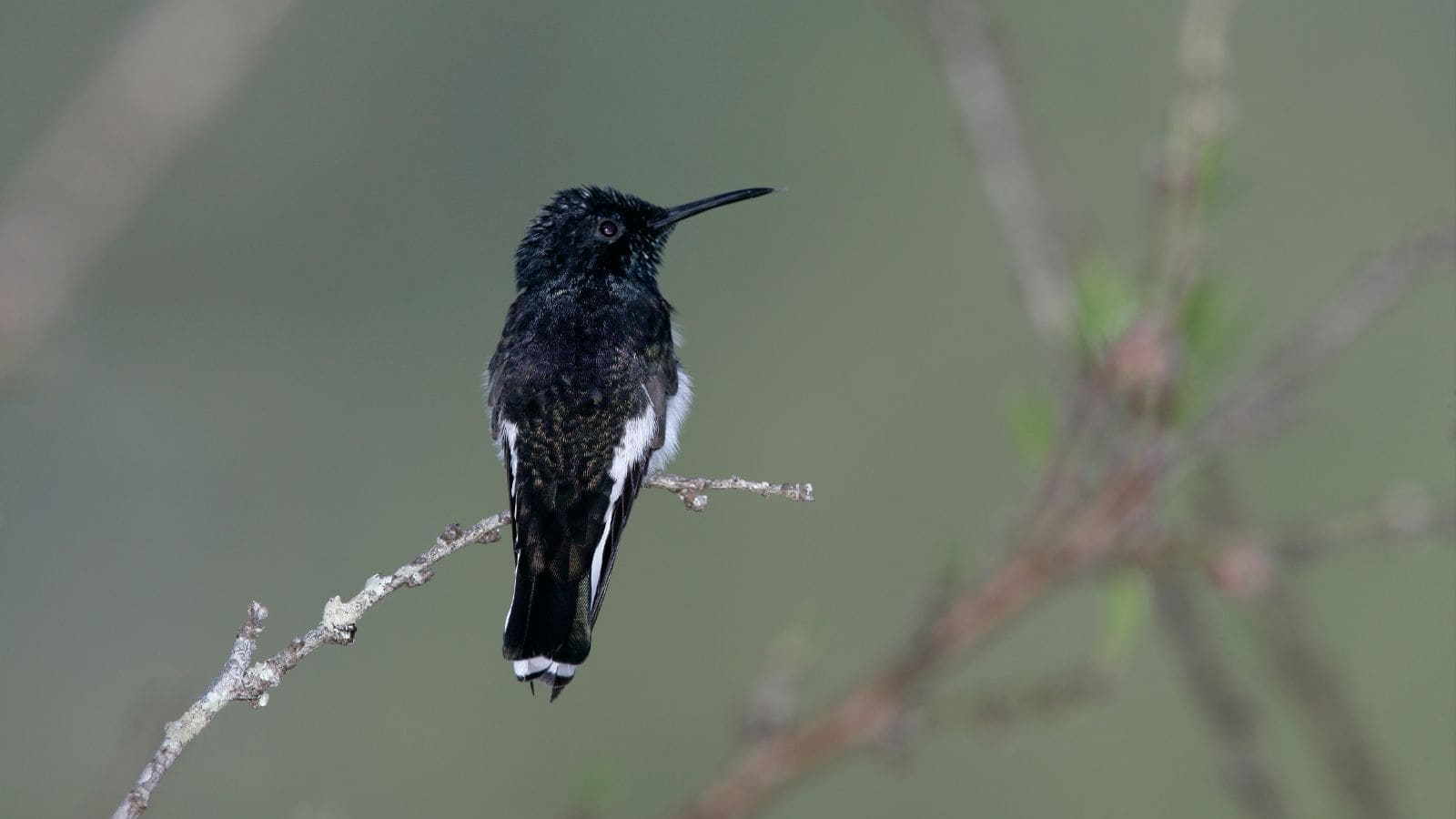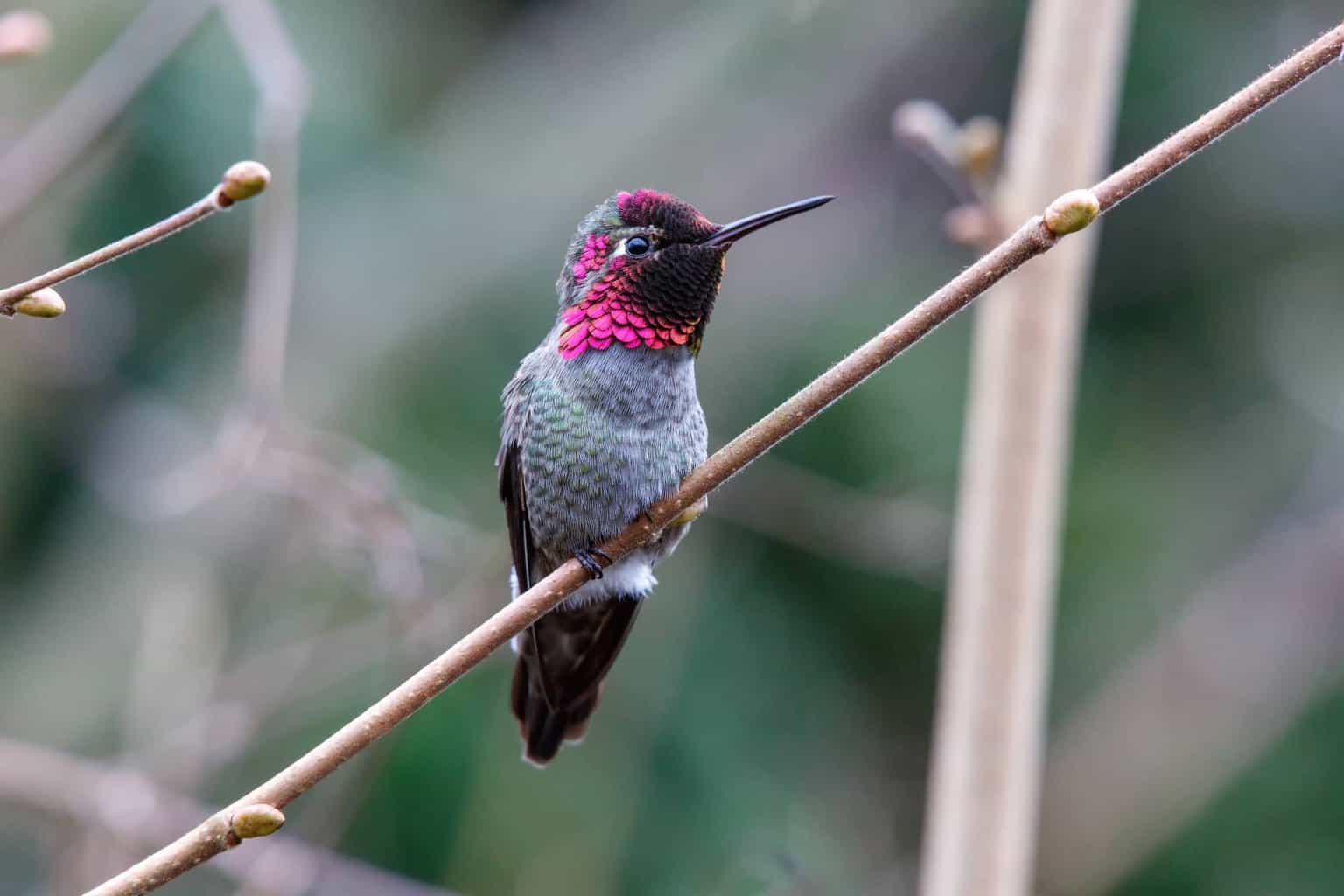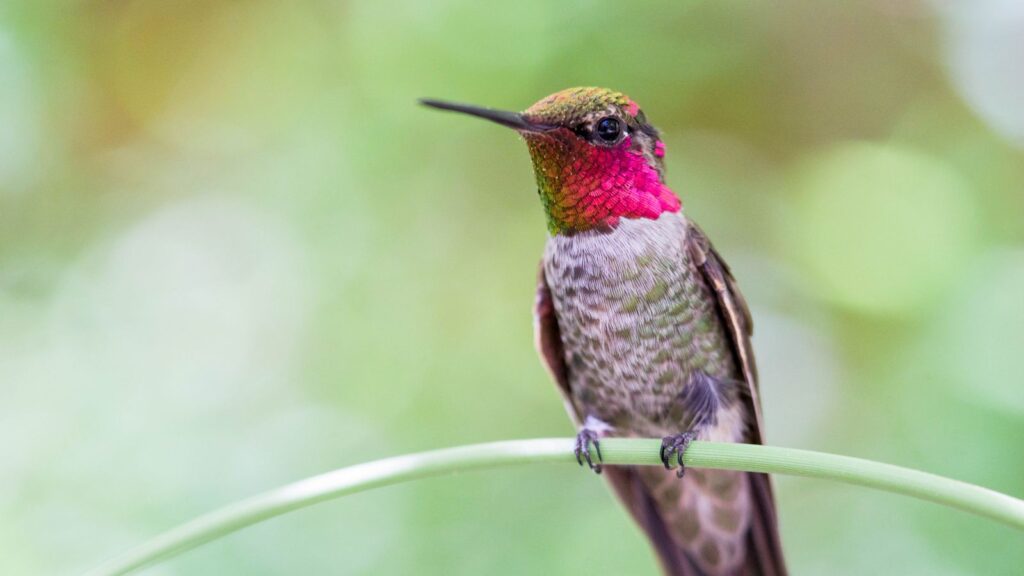When most people think of hummingbirds, they may think of their colorful appearance, their ability to hover mid-air in front of a flower or feeder, or just how tiny and fascinating they are.
If you’re like a lot of other people who love hummingbirds, it’s not enough to just enjoy their occasional visit to your feeders or flower garden. Instead, you probably find yourself learning about what interesting little creatures they are!
After all, these are hummingbirds we’re talking about here! They can see ultraviolet light! They eat up to 2,000 insects in a day! Many of them fly huge distances when they migrate – such as the Rufous Hummingbird’s 4,000-mile migration path!
But what about their hearing? Do hummingbirds hear like people do? What kind of sounds do they pick up on? And how are their ears constructed?
These are great questions for the curious birder! Let’s take a deep dive into the world of hummingbird hearing.
Can Hummingbirds Hear? And What Is Their Hearing Like?
First, let’s talk about their ears.
Hummingbirds have ears, but you aren’t going to see them just by looking. Their tiny ears are covered by protective feathers. Some hummingbird varieties have different colored feathers over their ears, but other species have no special markings for their ears.
Their ears are like other birds’ ears: there is no outer ear structure, and the ear is found just behind and below the eyes.
Here are some other interesting parts of a hummingbird’s anatomy:
- A brain that makes up 4.2% of its body weight, which is a larger percentage than most other birds
- A long tongue that allows a hummingbird to lap nectar up to 18 times per second
- Shoulders that rotate 180 degrees
- A hummingbird has no bladder; waste is immediately dispelled from the cloaca
But let’s get back to those ears!
In general, hummingbird hearing is excellent. In fact, hummingbirds can hear subtle changes in tone much better than humans.
Recent Research Into Hummingbird Hearing
Recent research has documented several species of hummingbirds making extremely high-pitched vocalizations in the ultrasonic range, above what scientists previously thought was the upper limit of bird hearing.
In studies published in 2018, researchers found Black Jacobin hummingbirds in Brazil vocalizing up to 80 kHz and four Ecuadorian hummingbird species vocalizing between 9 – 13 kHz. The context in which the birds use these vocalizations suggests they can hear and communicate with each other at these frequencies.

This certainly challenges our understanding of avian hearing capabilities. Researchers hypothesize the birds may have adapted to use higher frequencies to overcome interference from noisy ambient sounds in their habitats.
However, actually measuring the birds’ hearing has proven difficult so far. While we don’t yet fully understand how they hear ultrasonic sounds, the mounting evidence suggests that hummingbirds can perceive and produce vocalizations well above what was thought possible. More research is needed to conclusively demonstrate the mechanism behind this remarkable ability.
What Sounds Do Hummingbirds Make?
We don’t usually think of hummingbirds as singing birds, but they are actually quite noisy, especially for their size.
Hummingbirds make a variety of vocalizations and non-vocal sounds to communicate.
Males use tail feathers to create chirping sounds when attracting mates. They also use chip calls to greet each other in the mornings. And of course, the humming sound that comes from their rapid wing vibrations is what gives them their name!
While not all hummingbird species are highly vocal, some like the Anna’s Hummingbird have complex songs.

While hummingbirds are better known visually for their small size, speedy flight, and iridescent feathers, they do produce vocalizations. Different sounds serve distinct social functions, such as defending territories and attracting mates.
With practice, listeners can become skilled at detecting hummingbirds by ear. For example, humans may hear chirping directed at them when hummingbirds recognize people as a food source. This happens when hummingbirds observe one person repeatedly filling their feeders or tending the garden where they find a lot of nectar.
Birders can even learn to identify hummingbirds by sound before sight by researching their local species’ calls online and differentiating them from other backyard noises like insects.
Developing the ability to recognize hummingbird sounds takes research on local species and their typical calls. Listening to online recordings prepares listeners to identify calls in nature. Careful listening focused on differentiating hummingbird sounds from other backyard noisemakers like insects and birds helps birders detect hummingbirds audibly even before seeing them. Attentive listening skills allow humans to appreciate the range of hummingbird sounds beyond their acrobatic dives.
Types of Hummingbird Sounds
- Chips: These short, high-pitched single-note chirps are one of the most frequent hummingbird sounds. Both males and females use chip calls to communicate with each other or signal alarm.
- Chatter: Longer rapid series of chips are described as chatter. Males may chatter excitedly during courtship, while females chatter to their young. Chatter can also signify aggression between territorial birds.
- Squeaks: High-pitched squeaking occurs when a bird is distressed or feels threatened, like when defending a feeder. Squeaks are often accompanied by aggressive diving.
- Whistles: Lower-pitched whistles are primarily made by males during courtship rituals. Whistles can be mellow, with subtle frequency modulations, or piercing and loud.
- Trills/Songs: Some species like Anna’s Hummingbirds perform complex vocalizations described as songs. These mix chips, chatter, whistles, and buzzing notes. Songs can last over 10 seconds with varied melodic sequences.
Are Hummingbirds Happy When They Chirp?
Check out this video of the hummingbird’s high-pitched little chirping sounds.
Although hummingbirds will chirp when defending their territory or attracting a mate, this small sound is often just the sound of happiness!
A healthy and happy hummingbird will chirp like this to communicate that everything is going well.
How Hummingbird Hearing Affects Their Behavior
A hummingbird’s specialized hearing abilities directly support key behaviors they rely on for survival:
- Feeding: Hummingbirds depend on nectar, and use their excellent high-frequency hearing to home in on the sounds made by bees and insects feeding at flowers. This helps them efficiently locate food sources.
- Migration: Their ability to hear high frequencies above the range of human hearing may help hummingbirds with navigation on their long migrations. They are able to detect subtle audio cues imperceptible to our ears.
- Courtship: Males perform courtship displays involving aerial maneuvers, vocalizations, and feather sounds to attract mates. Their hearing allows them to modulate sounds and react to female responses, and females pay attention to whether or not they like the sounds they are hearing.
- Predator avoidance: Hummingbirds can hear the ultrasonic echolocation calls of bats, a major predator. This hearing sensitivity lets them rapidly escape an attack. Better hearing likely improves threat detection.
Overall, hummingbirds leverage their specialized auditory system to support feeding, breeding, migrating, and surviving in their demanding environment. Their unique lifestyle places a premium on acute hearing adapted to their needs!

